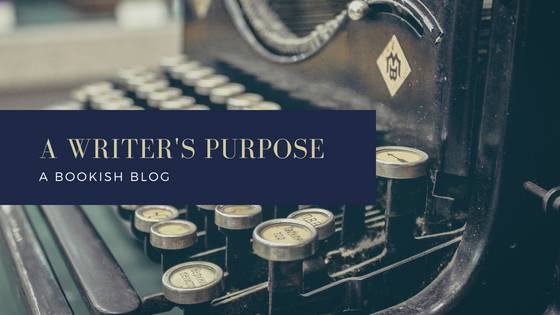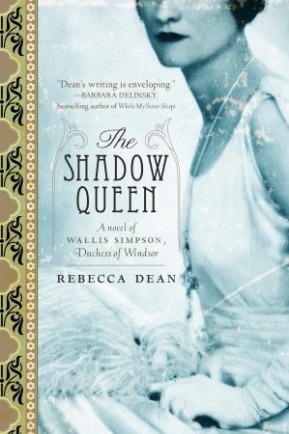I am a fan of everything British and that includes royalty. When I watched the film “The King’s Speech” last year I caught a glimpse of the love story of Prince Edward and Wallis Simpson. Soon after I watched a documentary about the epic story of the King who gave up the throne to marry for love, and I still wanted to learn more.
When I came across Rebecca Dean’s “The Shadow Queen,” a historical fiction novel that tells a fascinating story of Wallis, the Duchess of Windsor, it was a must read.
I contacted Rebecca Dean to ask her questions about how the novel came to be, her fascination with recent royal history, and her experience meeting a royal.
Q: Why did you choose to write about the Duchess of Windsor?
A: I chose to write about her because she has always fascinated me, and because I thought she had been demonized for far too long. The view always taken of her was that she was an arch manipulator; a scheming, devious woman with few, if any, redeeming features. It wasn’t my perception of her and the more primary sources I read — particularly the letters she wrote almost constantly to her aunt, Bessie Merryman — the more simpatico towards her I became. It was her early years — the years before she came to world attention as the woman for whom a king gave up a throne — that I found most illuminating when it came to an understanding of her character. The Wallis who struggled with the opposites of having been born into an illustrious family and yet, because of her father’s early death, lived on an uncle’s charity, unable to take anything — even clothes and schooling — for granted. The Wallis who instantly turned down her uncle’s offer to adopt her and make her his heir when told the offer was conditional upon her never entering her mother’s home again. Loyal, not hard-hearted, scheming or opportunistic — was the word her Baltimore friends used about her. It was this quality, together with her irrepressible sassiness and her refusal to let life get the better of her, that I found deeply compelling.
Q: The Shadow Queen is your second novel that involves Prince Edward, where does that interest come from?
A: A love of England and English history. The Abdication in 1936 changed English royal history in the most cataclysmic way possible. Taken on its own it seems almost inexplicable — and in looking for some kind of explanation I wondered if the seeds of Edward’s action were sown long before he ever met Wallis. I felt that his loveless childhood had played a part — that starved of love as a child, when faced with the choice of remaining king, but living without the lifelong love he had finally found, there was, for Edward, simply no contest. I also think the unhappy outcome of his youthful romance with Lady Rosemary Leveson-Gower, the younger daughter of the Duke of Sutherland, left an incredible mark and played a part in the decision he made when, for Wallis, he abandoned the greatest throne in the world. (He had met Rosemary during WWI when he was 24 and serving in France and Rosemary was in France as a Red Cross nurse. Friends are on record as saying he wanted to marry her and this father, George V, refused his consent on the grounds that Rosemary was not royal). Two years later Lady Rosemary married Viscount Ednam, one of Edward’s friends. She died in a plane crash in 1930, just four months before Edward met Wallis.
Q: How much time was spent researching for The Shadow Queen?
A: A year.
Q: You chose to include fictional characters in Pamela, John Jasper and the Houghtons; why did you want to include them in the story?
A: The Houghtons were a link back to The Golden Prince, my book about Edward as a very young man. Pamela was introduced because I needed Wallis to have a close friend with whom she could express her hopes and aspirations. When it came to Wallis’s early, innocent romance in Baltimore there was simply not enough information on any one of the boys mentioned in her autobiography and so I amalgamated them into John Jasper.
Q: I read you are working on The Shadow Queen’s sequel, will it pick up where it left off in 1931?
A: The Lost Crown will pick up exactly where The Shadow Queen finished, but first I have to complete and deliver a completely fictional novel, The Viscount’s Daughters.
Q: What do you think of the love story of the Duke and Duchess of Windsor?
A: I think it was epic — and it was enduring. He was just as much in love with her on the day he died, as he was on the day he gave up his throne for her. I think her love for him was less obsessional, but no less deep and sincere.
Q: What do you find is the biggest challenge in writing historical fiction?
A: Doing justice to the people I am writing about.
Q: I read your passion is recent royal history. Who is your favorite subject?
A: At the moment it is still Wallis and Edward. I have a lot of unfinished business where they are concerned. Edward’s mother, Queen Mary, also fascinates me. What went on behind that regally repressed exterior? I suspect a great deal, and I’d like to write about it!
Q: Have you ever met any royals? What was the experience like?
A: I met Princess Margaret, but it was before my interest in the royals was so intense and so I did not, perhaps, make the most of it.
Q: I watched Madonna’s film “W.E.” this week about the Duke and Duchess of Windsor. Have you seen it? What did you think of the interpretation?
A: I haven’t seen it — apart from clips on TV. (This, on purpose. I haven’t wanted anything intruding on my own concept of Wallis when I still haven’t finished writing about her).
Q: What book are you reading now?
A: “Bring Up the Bodies”, Hilary Mantel’s brilliant, brilliant follow up to Wolf Hall, her novel centering on Thomas Cromwell, a minister in Henry VIII’s court.

